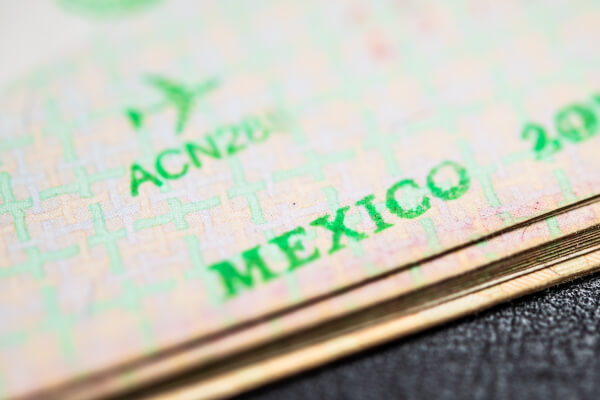How to Hire Independent Contractors in Mexico | Legal Guide & Best Practices
Learn how to hire and pay independent contractors in Mexico. This article also includes an FAQ and best practices about working with contractors in Mexico.

International transactions open your business to the global market. But they’re not without additional costs. Cross border fees are one of these costs to consider.
When accepting large volumes of international card payments, the cross border fee can quickly add up - affecting your bottom line.
Pay international bills without the hefty fees,
Try Wise Business
| 📝 This article will cover |
|---|
Every time you accept a payment from a credit card issued by a foreign bank, you’re charged a cross border fee.
Cross border fees were introduced in 2005. The rise of e-commerce and international transactions increased assessment fees.
Card networks shifted these increased fees on to issuing banks, who in turn shifted them on to merchants.
Here’s an overview of the fees charged by popular card issuers:
| Issuer | US Cross Border fee | US Cross Border fee, Non-USD¹ |
|---|---|---|
| Mastercard (MC) | 0.60% | 1.00% |
| Visa | 1.00% | 1.40% |
| Discover International | 0.80% | 0.80% |
Cross border transactions involve significant work. They also carry a risk for the financial institutions involved.
The process of bringing together merchants and international customers, across different banking networks with different currencies is complex.
This risk and work are passed on to merchants in the form of cross border fees.
When deciding whether or not to apply cross border fees, credit card companies are interested in two things:
| 🔍 Example: | |
|---|---|
| Let’s say a customer from Germany buys a product from your business in the US. They pay with their credit card, issued by a German bank. When you accept their payment, you’ll be charged a cross border fee as the issuing bank is German and your business is American. |
On top of this, you may be charged a different rate depending on whether the transaction was completed in USD or another currency.
For example, the Mastercard cross border fee for USD transactions is 0.60% and for non-USD transactions is 1.00%.¹
Let’s go back to our German customer.
If your German customer decides to complete the transaction in USD, then you’ll be charged the Mastercard cross border fee of 0.60%. If, however, they decide to pay in Euro, then you’ll be charged the MC cross border fee of 1.00%.
That said, if your German customer had a separate US bank account and credit card, and paid using it, then no cross border fee would be applied.
The credit card company cares only about the location of your merchant account relative to the location of the card issuing bank.
Cross border fees are fixed fees. Unfortunately, they’re simply a part of international business. So long as your business accepts international credit card payments, it will continue to pay cross border fees.
That said, there are ways to avoid cross border fees.
| 💡 If you’re looking for an easy, stress-free way to avoid cross border fees, then the Wise Business account is here to help you. |
|---|
With Wise Business, you can access local account details for up to 10 major currencies. You can accept payments like a local, saving you on cross border fees while making life easier for your customers.
This means you only need to open one account to receive account details and payments in GBP, EUR and more. Even as a US citizen. You can then hold, spend, or exchange currencies, at the real mid-market rate all in one place.
There's no need to wait in line, you can open your account easily online.
For example, if you have a large customer base in Madrid, then you could open a merchant account in Spain. With a local account, you’d then be able to accept Spanish credit cards without having to pay a cross border fee - just as if it was a US customer.
It can be difficult to open a local account without a local business address, however. Most traditional banks also require you to be present in person to open the account. Using a banking alternative, such as Wise, can save a lot of hassle.
If there is high demand for your product in the Philippines, for example, then you could partner with a local distributor there.
Your international customers can buy your products from the distributor located in their home country. This means that the card issuing bank and the merchant account are in the same country - avoiding cross border fees.

Sources:
Source checked September 8, 2022.
*Please see terms of use and product availability for your region or visit Wise fees and pricing for the most up to date pricing and fee information.
This publication is provided for general information purposes and does not constitute legal, tax or other professional advice from Wise Payments Limited or its subsidiaries and its affiliates, and it is not intended as a substitute for obtaining advice from a financial advisor or any other professional.
We make no representations, warranties or guarantees, whether expressed or implied, that the content in the publication is accurate, complete or up to date.

Learn how to hire and pay independent contractors in Mexico. This article also includes an FAQ and best practices about working with contractors in Mexico.

Learn how to navigate the overseas worker recruitment. Discover legal requirements, sourcing strategies, visa compliance, and tips for international hiring.

Paying overseas vendors is common, but the hidden costs of B2B cross-border payments aren’t. Learn how to simplify international business payments today.

B2B payment processing doesn’t have to be hard. Learn how growing businesses can simplify cross-border transactions, streamline invoicing and get paid faster.

Discover strategies to enhance B2B payment security, reduce fraud risk, and protect cash flow using secure digital payment methods and automated workflows.

B2B payment automation helps small businesses save time and reduce costs. Read about how automation replaces manual tasks and boosts accuracy and cash flow.